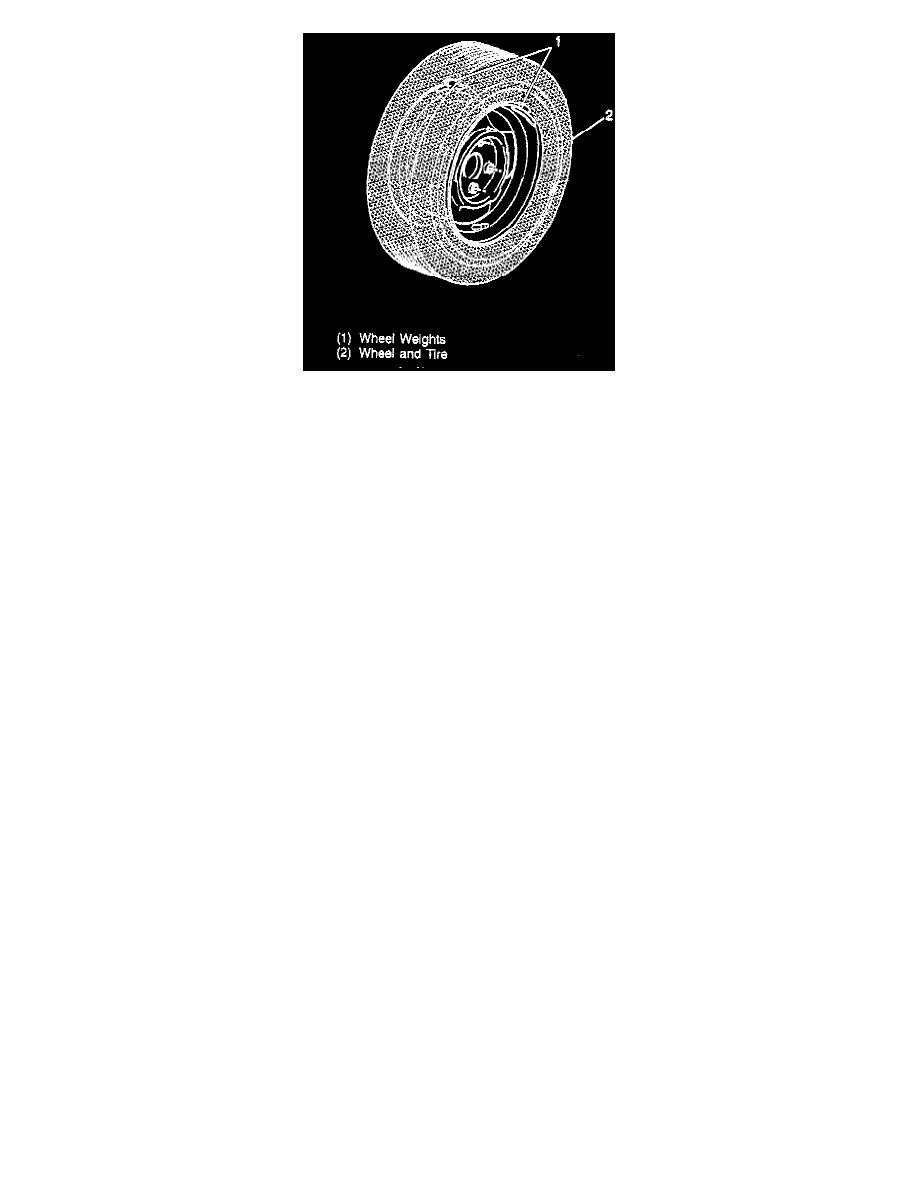G 1500 1/2 Ton Van V6-4.3L VIN W (1997)

Clean deposits of foreign material from the inside of the wheel. Remove stones from the tread to avoid operator injury during spin balancing and to
obtain a good balance. Inspect the tire for any damage, then balance according to the equipment manufacturer's recommendations.
Off-Vehicle Balancing
When balancing tires and wheels off the vehicle, use a balancer that pilots the wheel by the center hole (not the wheel bolt) if possible. Always follow the
equipment manufacturer's instructions.
Some electronic off-vehicle balancers are more accurate than the on-vehicle spin balancers, but do not correct for rotor imbalance. If the vibration is not
corrected by the off-vehicle balance, an on-vehicle balance may also be needed.
On-Vehicle Balancing
When needed, on-vehicle balancing will help correct vibrations due to brake drum, rotor, and wheel cover imbalance.
When balancing on-vehicle, remove the balance weights from the off-vehicle dynamic balance. If more than 28 grams (one ounce) of additional weight is
required, it should be split between the inner and outer rim flange.
NOTICE: The driven tire and wheel assemblies should be spun using the engine. Limit speed as stated in the following Caution.
CAUTION: Do not spin the drive wheels faster than 55 km/h (34 mph) has indicated by the speedometer. This limit is necessary because the
speedometer indicates only one-half of the actual wheel speed when one drive wheel Is spinning and the other drive wheel is stopped. Personal injury
and damage may result from high speed spinning.
